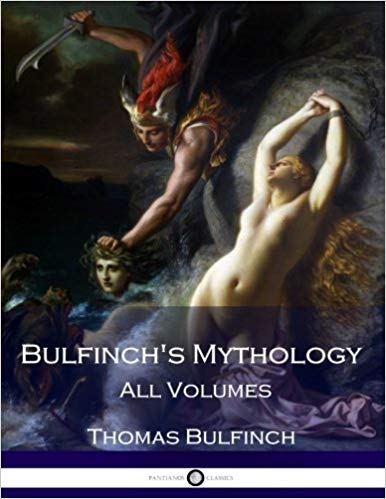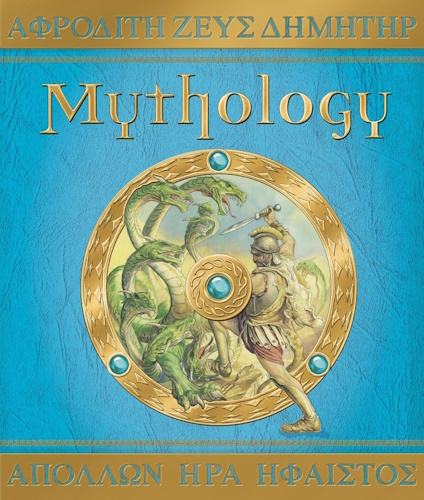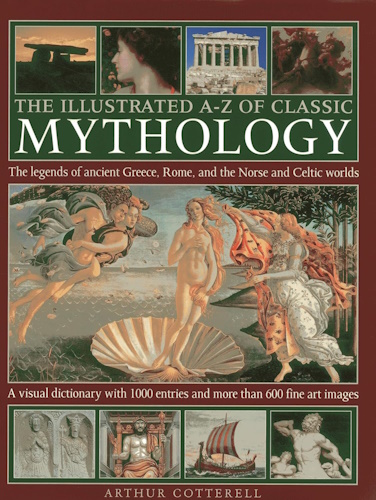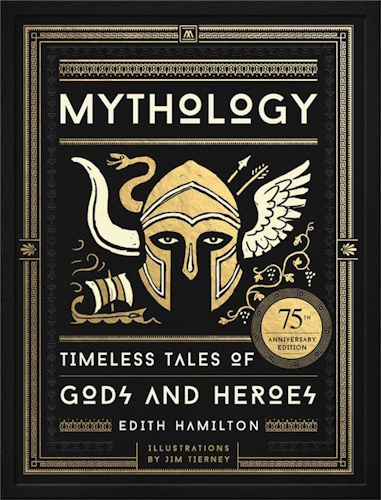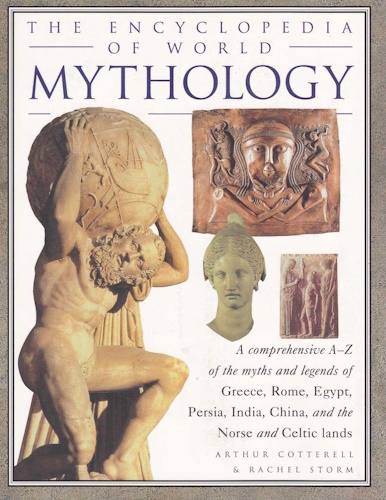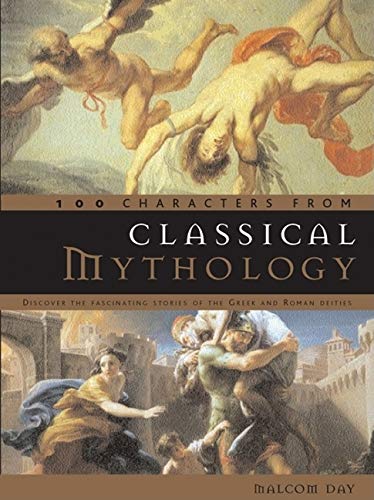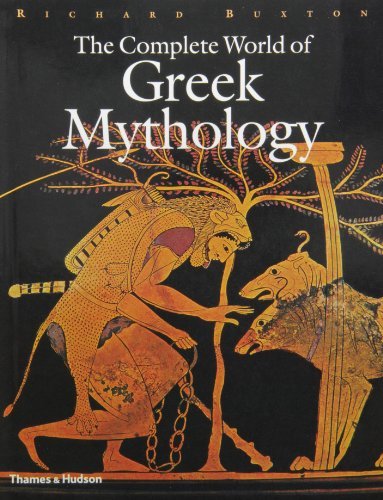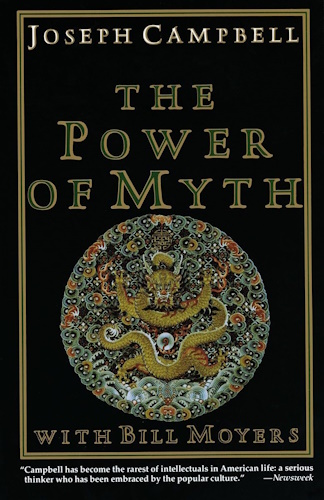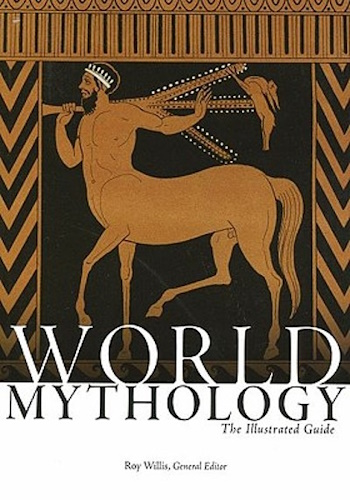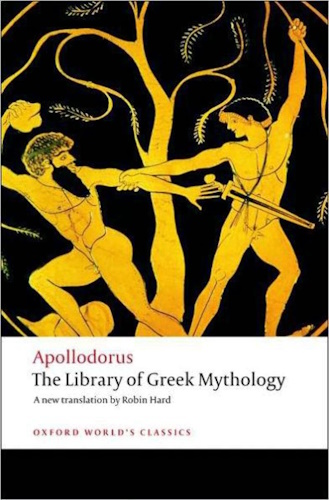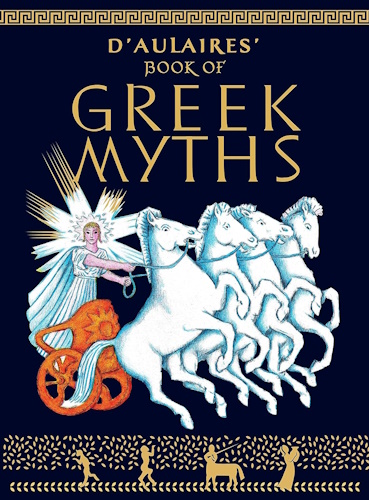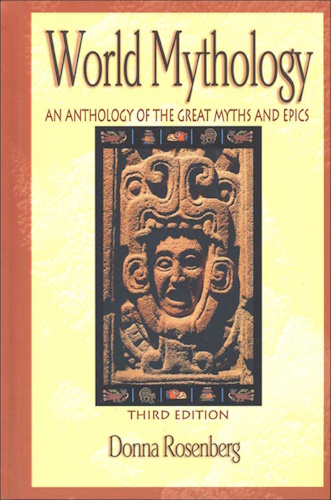
![]()
![]()
Part III.
The Knights of English History.
Chapter XXXIV.
Robin Hood of Sherwood Forest.
In this our spacious isle I think there is not one,
But he of ROBIN HOOD hath heard and Little John;
And to the end of time the tales shall ne'er be done
Of Scarlock, George a Green, and Much the miller's son,
Of Tuck, the merry friar, which many a sermon made
In praise of ROBIN HOOD, his outlaws and their trade.
--DRAYTON.
EVERY reader of "Ivanhoe," at the mention of Richard the Crusader, will be reminded of Robin Hood, the noble outlaw of Sherwood Forest, and his band of merry bowmen. With these we next concern ourselves, and if the reader will pardon the dry outlines of the historian before proceeding to the more interesting and imaginative story of the ballad-singer, we will at first state what so careful an antiquary as Mr. Ritson considers to be truly trustworthy in Robin Hood's history.
Robin Hood was born at Locksley, in the county of Nottingham, in the reign of King Henry II, and about the year of Christ 1160. His extraction was noble, and his true name Robert Fitzooth, which vulgar pronunciation easily corrupted into Robin Hood. He is frequently styled, and commonly reputed to have been, Earl of Huntingdon; a title to which, in the latter part of his life at least, he actually appears to have had some sort of pretension. In his youth he is reported to have been of a wild and extravagant disposition, insomuch that, his inheritance being consumed or forfeited by his excesses, and his person outlawed for debt, either from necessity or choice he sought an asylum in the woods and forests, with which immense tracts, especially in the northern part of the kingdom, were at that time covered. Of these he chiefly affected Barnsdale, in Yorkshire; Sherwood in Nottinghamshire, and, according to some, Plompton Park in Cumberland. Here he either found or was afterwards joined by a number of persons in similar circumstances, who appear to have considered and obeyed him as their chief or leader. . . . Having for a long series of years maintained a sort of independent sovereignty, and set kings, judges, and magistrates at defiance, a proclamation was published, offering a considerable reward for bringing him in either dead or alive; which, however, seems to have been productive of no greater success than former attempts for that purpose. At length the infirmities of old age increasing upon him, and desirous to be relieved, in a fit of sickness, by being let blood, he applied for that purpose to the prioress of Kirkley nunnery in Yorkshire, his relative (women, and particularly religious women, being in those times somewhat better skilled in surgery than the sex is at present), by whom he was treacherously suffered to bleed to death. This event happened on the 18th November, 1247, being the thirty-first year of King Henry III.; and if the date assigned to his birth be correct, about the eighty-seventh year of his age. He was interred under some trees at a short distance from the house; a stone being placed over his grave, with an inscription to his memory.
There are some who will have it that Robin Hood was not alive in the reign of Richard I., and who will have it that he preferred other forests to Sherwood. But the stories that we have chosen are of the Robin Hood of Sherwood Forest and of King Richard the Lion-hearted.
Little John.
The lieutenant of Robin Hood's band was named Little John, not so much from his smallness in stature (for he was seven feet high and more), as for a reason which I shall tell later. And the manner in which Robin Hood, to whom he was very dear, met him was this.
Robin Hood on one occasion being hunting with his men and finding the sport to be poor, said: "We have had no sport now for some time. So I go abroad alone. And if I should fall into any peril whence I cannot escape I will blow my horn that ye may know of it and bear me aid." And with that he bade them adieu and departed alone, having with him his bow and the arrows in his quiver. And passing shortly over a brook by a long bridge he met at the middle a stranger. And neither of the two would give way to the other. And Robin Hood being angry fitted an arrow to his bow and made ready to fire. "Truly," said the stranger at this, "thou art a fine fellow that you must draw your long bow on me who have but a staff by me." "That is just truly," said Robin; "and so I will lay by my bow and get me a staff to try if your deeds be as good as your words." And with that he went into a thicket and chose him a small ground oak for a staff and returned to the stranger.
"Now," said he, "I am a match for you, so let us play upon this bridge, and if one should fall in the stream the other will have the victory." "With all my heart," said the stranger; "I shall not be the first to give out." And with that they began to make great play with their staves. And Robin Hood first struck the stranger such a blow as warmed all his blood, and from that they rattled their sticks as though they had been threshing corn. And finally the stranger gave Robin such a crack on his crown that he broke his head and the blood flowed. But this only urged him the more, so that he attacked the stranger with such vigor that he had like to have made an end of him. But he growing into a fury finally fetched him such a blow that he tumbled him from the bridge into the brook. Whereat the stranger laughed loudly and long, and cried out to him, "Where art thou now, I prythee, my good fellow?" And Robin replied, "Thou art truly a brave soul, and I will have no more to do with thee to-day; so our battle is at an end, and I must allow that thou hast won the day." And then wading to the bank he pulled out his horn and blew a blast on it so that the echoes flew throughout the valley. And at that came fifty bold bowmen out of the wood, all clad in green, and they made for Robin Hood, and said William Stukely, "What is the matter, my master? you are wet to the skin?" "Truly, nothing is the matter," said Robin, "but that the lad on the bridge has tumbled me into the stream." And on that the archers would have seized the stranger to duck him as well, but Robin Hood forbade them. "No one shall harm thee, friend," said he. "These are all my bowmen, threescore and nine, and if you will be one of us you shall straightway have my livery and accoutrements, fit for a man. What say you?" "With all my heart," said the stranger; "here is my hand on it. My name is John Little, and I will be a good man and true to you." "His name shall be changed," said William Stukely on this. "We will call him Little John, and I will be his godfather."
So they fetched a pair of fat does and some humming strong ale, and there they christened their babe Little John, for he was seven feet high and an ell round at his waist.
Friar Tuck.
Now Robin Hood had instituted a day of mirth for himself and all his companions, and wagers were laid amongst them who should exceed at this exercise and who at that; some did contend who should jump farthest, some who should throw the bar, some who should be swiftest afoot in a race five miles in length; others there were with which Little John was most delighted, who did strive which of them should draw the strongest bow, and be the best marksman. "Let me see," said Little John, "which of you can kill a buck, and who can kill a doe, and who is he can kill a hart, being distant from it by the space of five hundred feet." With that, Robin Hood going before them, they went directly to the forest, where they found good store of game feeding before them. William Scarlock, that drew the strongest bow of them all, did kill a buck, and Little John made choice of a barren fat doe, and the well-directed arrow did enter in the very heart of it; and Midge, the miller's son, did kill a hart above five hundred feet distant from him. The hart falling, Robin Hood stroked him gently on the shoulder, and said unto him, "God's blessing on thy heart, I will ride five hundred miles to find a match for thee." William Scarlock, hearing him speak these words, smiled and said unto him, "Master, what needs that? Here is a Curtal Friar39 not far off, that for a hundred pound will shoot at what distance yourself will propound, either with Midge or with yourself. An experienced man he is, and will draw a bow with great strength; he will shoot with yourself, and with all the men you have, one after another."
39 "The Curtal Friar," Dr. Stukely says, "is Cordelier, from the cord or rope which they wore round their waist, to whip themselves with. They were," adds he, "of the Franciscan order. Our Friar, however, is undoubtedly so called from his Curtal dogs, or curs, as we now say." Thoms. Early Prose Romances: in which, by the way, may be found many of the tales of Robin Hood printed here, and much more besides of interest.
"Sayest thou so, Scarlock?" replied Robin Hood. "By the grace of God I will neither eat nor drink till I see this Friar thou dost speak of." And having prepared himself for his journey, he took Little John and fifty of his best archers with him, whom he bestowed in a convenient place, as he himself thought fitting. This being done, he ran down into the dale, where he found the Curtal Friar walking by the water side. He no sooner espied him, but presently he took unto him his broadsword and buckler, and put on his head a steel bonnet. The Friar, not knowing who he was, or for what intent he came, did presently arm himself to encounter with him. Robin Hood, coming near unto him, alighted from his horse, which he tied to a thorn that grew hard by, and looking wistfully on the Friar, said unto him, "Carry me over the water, thou Curtal Friar, or else thy life lies at the stake." The Friar made no more ado, but took up Robin Hood and carried him on his back; deep water he did stride; he spake not so much as one word to him, but having carried him over, he gently laid him down on the side of the bank; which being done, the Friar said to Robin Hood, "It is now thy turn; therefore carry me over the water, thou bold fellow, or sure I shall make thee repent it." Robin Hood, to requite the courtesy, took the Friar on his back, and not speaking the least word to him, carried him over the water, and laid him gently down on the side of the bank; and turning to him, he spake unto him as at first, and bade him carry him over the water once more, or he should answer it with the forfeit of his life. The Friar in a smiling manner took him up, and spake not a word till he came in the midst of the stream, when, being up to the middle and higher, he did shake him from off his shoulders, and said unto him, "Now choose thee, bold fellow, whether thou wilt sink or swim."
Robin Hood, being soundly washed, got him up on his feet, and prostrating himself, did swim to a bush of broom on the other side of the bank; and the Friar swam to a willow tree which was not far from it. Then Robin Hood, taking his bow in his hand, and one of his best arrows, did shoot at the Friar, which the Friar received in his buckler of steel, and said unto him, "Shoot on, thou bold fellow; if thou shootest at me a whole summer's day I will stand your mark still." "That will I," said Robin Hood, and shot arrow after arrow at him, until he had not an arrow left in his quiver. He then laid down his bow, and drew out his sword, which but two days before had been the death of three men. Now hand to hand they went with sword and buckler; the steel buckler defends whatsoever blow is given; sometimes they make at the head, sometimes at the foot, sometimes at the side; sometimes they strike directly down, sometimes they falsify their blows, and come in foot and arm, with a free thrust at the body; and being ashamed that so long they exercise their unprofitable valor and cannot hurt one another, they multiply their blows, they hack, they hew, they slash, they foam. At last Robin Hood desired the Friar to hold his hand, and to give him leave to blow his horn.
"Thou wantest breath to sound it," said the Friar; "take thee a little respite, for we have been five hours at it by the Fountain Abbey clock." Robin Hood took his horn from his side, and having sounded it three times, behold where fifty lusty men, with their bended bows, came to his assistance. The Friar, wondering at it, "Whose men," said he, "be these?" "They are mine," said Robin Hood; "what is that to thee?" "False loon," said the Friar; and making a little pause, he desired Robin Hood to show him the same courtesy which he gave him. "What is that?" said Robin Hood. "Thou soundest thy horn three times," said the Friar; "let me now but whistle three times." "Ay, with all my heart," said Robin Hood; "I were to blame if I should deny thee that courtesy." With that the Friar set his fist to his mouth, and whistled three times so shrilly that the place echoed again with it; and behold three and fifty fair ban-dogs (their hair rising on their back, betokening their rage), were almost on the backs of Robin Hood and his companions. "Here is for every one of thy men a dog," said the Friar, "and two for thee." "That is foul play," said Robin Hood. He had scarce spoken that word but two dogs came upon him at once, one before, another behind him, who, although they could not touch his flesh (his sword had made so swift a despatch of them), yet they tore his coat into two pieces. By this time the men had so laid about them that the dogs began to fly back, and their fury to languish into barking. Little John did so bestir himself, that the Curtal Friar, admiring at his courage and his nimbleness, did ask him who he was. He made him answer, "I will tell the truth, and not lie. I am he who is called Little John, and de belong to Robin Hood, who hath fought with thee this day, five hours together; and if thou wilt not submit unto him, this arrow shall make thee." The Friar, perceiving how much he was overpowered, and that it was impossible for him to deal with so many at once, did come to composition with Robin Hood. And the articles of agreement were these: That the Friar should abandon Fountain Dale and Fountain Abbey, and should live with Robin Hood, at his place not far from Nottingham, where for saying of mass, he should receive a noble for every Sunday through out the year, and for saying mass on every holy day, a new change of garment. The Friar, contented with these conditions, did seal the agreement. And thus by the courage of Robin Hood and his yeomen, he was enforced at the last to submit, having for seven long years kept Fountain Dale, not all the power thereabouts being able to bring him on his knees.
But Friar Tuck was the only man of the clergy with whom Robin had friendly dealings. As a rule these churchmen fared as did the Bishop of Hereford in the following ballad, which we add for the sake of an example of the manner in which this True History of Robin Hood has come down to us from the year 1245:–
The Bishop of Hereford's Entertainment by Robin Hood and Little John and Their Company, in Merry Barnsdale.
SOME they will talk of bold Robin Hood,
And some of barons bold;
But I'll tell you how he served the Bishop of Hereford,
When he robbed him of his gold.
As it befell in merry Barnsdale,
All under the greenwood tree,
The Bishop of Hereford was to come by,
With all his company.
"Come, kill me a venison," said bold Robin Hood,
"And dress it by the highway side,
And we will watch the bishop narrowly,
Lest some other way he should ride."
Robin Hood dressed himself in shepherd's attire,
With six of his men also,
And, when the Bishop of Hereford came by,
They about the fire did go.
"O, what is the matter?" then said the bishop,
"Or for whom do you make this ado?
Or why do you kill the king's ven'son,
When your company is so few?"
"We are shepherds," said bold Robin Hood,
"And we keep sheep all the year;
And we are disposed to be merry this day,
And to kill of the king's fat deer."
"You are brave fellows," said the bishop,
"And the king of your doings shall know;
Therefore make haste, and come along with me,
For before the king you shall go."
"O pardon, O pardon," said bold Robin Hood,
"O pardon, I thee pray;
For it becomes not your lordship's coat
To take so many lives away."
"No pardon, no pardon," said the bishop,
"No pardon I thee owe;
Therefore make haste, and come along with me,
For before the king you shall go."
Then Robin he set his back against a tree,
And his foot against a thorn,
And from underneath his shepherd's coat
He pulled out a bugle horn.
He put the little end to his mouth,
And a loud blast did he blow,
Till threescore and ten of bold Robin's men
Came running all in a row:
All making obeisance to bold Robin Hood;
'Twas a comely sight for to see.
"What is the matter, master," said Little John,
"That you blow so lustily?"
"O here is the Bishop of Hereford,
And no pardon we shall have."
"Cut off his head, master," said Little John,
"And throw him into his grave."
"O pardon, O pardon," said the bishop,
"O pardon, I thee pray;
For if I had known it had been you,
I'd have gone some other way."
"No pardon, no pardon," said bold Robin Hood,
"No pardon I thee owe;
Therefore make haste, and come along with me,
For to merry Barnsdale you shall go."
Then Robin he took the bishop by the hand,
And led him to merry Barnsdale;
He made him stay and sup with him that night,
And to drink wine, beer, and ale.
"Call in a reckoning," said the bishop,
"For methinks it grows wondrous high."
"Send me your purse, master," said Little John,
"And I'll tell you bye and bye."
Then Little John took the bishop's cloak,
And spread it upon the ground,
And out of the bishop's portmantua
He told three hundred pound.
"Here's money enough, master," said Little John,
"And a comely sight 'tis to see;
It makes me in charity with the bishop,
Though he heartily loveth not me."
Robin Hood took the bishop by the hand,
And he caused the music to play;
And he made the old bishop to dance in his boots,
And glad to get so away.
-
Urantia Book, 44:0.11 - The Celestial Artisans
Never in your long ascendancy will you lose the power to recognize your associates of former existences. Always, as you ascend inward in the scale of life, will you retain the ability to recognize and fraternize with the fellow beings of your previous and lower levels of experience. Each new translation or resurrection will add one more group of spirit beings to your vision range without in the least depriving you of the ability to recognize your friends and fellows of former estates.
-
Princess Bride 1987 Wallace Shawn (Vizzini) and Mandy Patinkin (Inigo Montoya)
Vizzini: HE DIDN'T FALL? INCONCEIVABLE.
Inigo Montoya: You keep using that word. I do not think it means what you think it means. -
Urantia Book, 117:4.14 - The Finite God
And here is mystery: The more closely man approaches God through love, the greater the reality -- actuality -- of that man. The more man withdraws from God, the more nearly he approaches nonreality -- cessation of existence. When man consecrates his will to the doing of the Father's will, when man gives God all that he has, then does God make that man more than he is.
-
Urantia Book, 167:7.4 - The Talk About Angels
"And do you not remember that I said to you once before that, if you had your spiritual eyes anointed, you would then see the heavens opened and behold the angels of God ascending and descending? It is by the ministry of the angels that one world may be kept in touch with other worlds, for have I not repeatedly told you that I have other sheep not of this fold?"
-
Urantia Book, Foreword - 0:12.12 - The Trinities
But we know that there dwells within the human mind a fragment of God, and that there sojourns with the human soul the Spirit of Truth; and we further know that these spirit forces conspire to enable material man to grasp the reality of spiritual values and to comprehend the philosophy of universe meanings. But even more certainly we know that these spirits of the Divine Presence are able to assist man in the spiritual appropriation of all truth contributory to the enhancement of the ever-progressing reality of personal religious experience—God-consciousness.
-
Urantia Book, 1:4.3 - The Mystery Of God
When you are through down here, when your course has been run in temporary form on earth, when your trial trip in the flesh is finished, when the dust that composes the mortal tabernacle "returns to the earth whence it came"; then, it is revealed, the indwelling "Spirit shall return to God who gave it." There sojourns within each moral being of this planet a fragment of God, a part and parcel of divinity. It is not yet yours by right of possession, but it is designedly intended to be one with you if you survive the mortal existence.
-
Urantia Book, 1:4.1 - The Mystery Of God
And the greatest of all the unfathomable mysteries of God is the phenomenon of the divine indwelling of mortal minds. The manner in which the Universal Father sojourns with the creatures of time is the most profound of all universe mysteries; the divine presence in the mind of man is the mystery of mysteries.
-
Urantia Book, 1:4.6 - The Mystery Of God
To every spirit being and to every mortal creature in every sphere and on every world of the universe of universes, the Universal Father reveals all of his gracious and divine self that can be discerned or comprehended by such spirit beings and by such mortal creatures. God is no respecter of persons, either spiritual or material. The divine presence which any child of the universe enjoys at any given moment is limited only by the capacity of such a creature to receive and to discern the spirit actualities of the supermaterial world.
-
Urantia Book, 11:0.1 - The Eternal Isle Of Paradise
Paradise is the eternal center of the universe of universes and the abiding place of the Universal Father, the Eternal Son, the Infinite Spirit, and their divine co-ordinates and associates. This central Isle is the most gigantic organized body of cosmic reality in all the master universe. Paradise is a material sphere as well as a spiritual abode. All of the intelligent creation of the Universal Father is domiciled on material abodes; hence must the absolute controlling center also be material, literal. And again it should be reiterated that spirit things and spiritual beings are real.
-
Urantia Book, 50:6.4 - Planetary Culture
Culture presupposes quality of mind; culture cannot be enhanced unless mind is elevated. Superior intellect will seek a noble culture and find some way to attain such a goal. Inferior minds will spurn the highest culture even when presented to them ready-made.
-
Urantia Book, 54:1.6 - True And False Liberty
True liberty is the associate of genuine self-respect; false liberty is the consort of self-admiration. True liberty is the fruit of self-control; false liberty, the assumption of self-assertion. Self-control leads to altruistic service; self-admiration tends towards the exploitation of others for the selfish aggrandizement of such a mistaken individual as is willing to sacrifice righteous attainment for the sake of possessing unjust power over his fellow beings.
-
Urantia Book, 54:1.9 - True And False Liberty
How dare the self-willed creature encroach upon the rights of his fellows in the name of personal liberty when the Supreme Rulers of the universe stand back in merciful respect for these prerogatives of will and potentials of personality! No being, in the exercise of his supposed personal liberty, has a right to deprive any other being of those privileges of existence conferred by the Creators and duly respected by all their loyal associates, subordinates, and subjects.
-
Urantia Book, 54:1.8 - True And False Liberty
There is no error greater than that species of self-deception which leads intelligent beings to crave the exercise of power over other beings for the purpose of depriving these persons of their natural liberties. The golden rule of human fairness cries out against all such fraud, unfairness, selfishness, and unrighteousness.
